Themed collection MSDE Recent HOT Articles

MOF catalysis meets biochemistry: molecular insights from the hydrolytic activity of MOFs towards biomolecules
The versatility of metal–organic frameworks (MOF) towards hydrolysis of a range of biological molecules is explored in detail to underline specific challenges and exciting possibilities of developing MOFs as nanozymes.

Mol. Syst. Des. Eng., 2023,8, 270-288
https://doi.org/10.1039/D2ME00213B
Advances in morphology control of organic semiconductor enabled organic transistor-based chemical sensors
This review summarized the fundamentals and recent developments of organic semiconductor morphology dependent organic-transistor-based chemical sensors, which also gives corresponding strategies toward high-performance device construction.
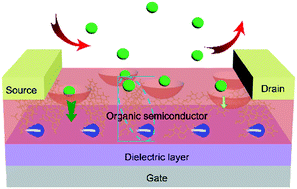
Mol. Syst. Des. Eng., 2022,7, 553-568
https://doi.org/10.1039/D2ME00020B
Organic molecular and polymeric electrets toward soft electronics
Flexible/stretchable electrets based on organic molecules and polymers, in particular, highly deformable liquid electrets are a promising candidate for future implantable/wearable soft electronics.
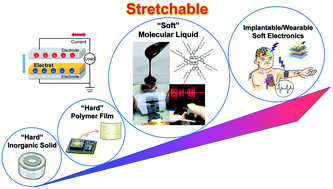
Mol. Syst. Des. Eng., 2022,7, 537-552
https://doi.org/10.1039/D1ME00180A
Ion beam nanoengineering of surfaces for molecular detection using surface enhanced Raman scattering
Ion beam engineering of surfaces is a promising way to tailor the surface properties. It provides control over depth and concentration of nanoparticles for SERS applications.
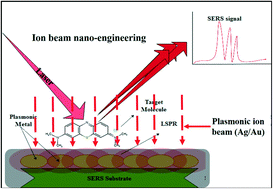
Mol. Syst. Des. Eng., 2022,7, 411-421
https://doi.org/10.1039/D2ME00006G
Computational aspects to design iridium complexes as emitters for OLEDs
Depiction of red, green and blue emitters along with energy level diagram.

Mol. Syst. Des. Eng., 2022,7, 1172-1206
https://doi.org/10.1039/D2ME00077F
Design and engineering of graphene nanostructures as independent solar-driven photocatalysts for emerging applications in the field of energy and environment
Graphene and its derivatives are used as metal-free photocatalysts because of their fascinating optoelectronic properties which can further be improved by chemical doping for advanced functional applications in the field of energy and environment.
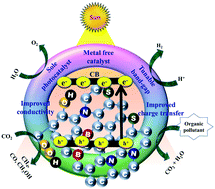
Mol. Syst. Des. Eng., 2022,7, 213-238
https://doi.org/10.1039/D1ME00179E
Design of carbon–ceramic composite membranes with tunable molecular cut-offs from a carboxylic benzoxazine ligand chelated to silica–zirconia
This study presents a concept that focuses on the structure design of preceramic resin precursors by the sol–gel method for fabricating carbon–ceramic molecular sieving membranes.
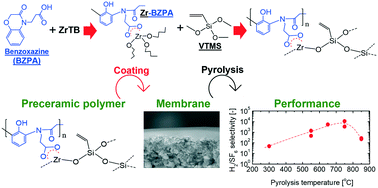
Mol. Syst. Des. Eng., 2022,7, 1030-1038
https://doi.org/10.1039/D2ME00078D
Application of automated network generation for retrosynthetic planning of potential corrosion inhibitors
This work uses automated network generation, specifically the Python-based tool Pickaxe, for retrosynthetic planning towards making potential corrosion inhibitors from a pool of candidate bioprivileged molecules.

Mol. Syst. Des. Eng., 2024,9, 352-371
https://doi.org/10.1039/D3ME00162H
Designing polyurethane-based microcapsules with tailored swelling behaviours for enhanced oil recovery
Polyurethane-based polymers are designed with tailored thermo-responsive swelling-release behaviours, and the roles of different segments in the swelling process are clarified.

Mol. Syst. Des. Eng., 2024,9, 46-55
https://doi.org/10.1039/D3ME00137G
Inhibitory behaviour and adsorption stability of benzothiazole derivatives as corrosion inhibitors towards galvanised steel
An in-depth understanding of corrosion inhibitor behaviour(s) at the metal–solution interface governed by unique molecular features is the key premise to realising molecular tailoring for pronounced metal protection.

Mol. Syst. Des. Eng., 2024,9, 29-45
https://doi.org/10.1039/D3ME00153A
Machine learning prediction of self-assembly and analysis of molecular structure dependence on the critical packing parameter
We used machine learning to predict the self-assembly structures of amphiphilic molecules and analyzed the physical factors affecting their morphologies.

Mol. Syst. Des. Eng., 2024,9, 20-28
https://doi.org/10.1039/D3ME00151B
Dynamic monitoring of epoxy reactions and modulus evaluation by a multispectral approach
The regulation of the polymerization process of moleculars from liquid to solid is crucial for the ultimate mechanical properties of composite materials.

Mol. Syst. Des. Eng., 2023,8, 1477-1482
https://doi.org/10.1039/D3ME00084B
Two-photon microprinting of 3D emissive structures using tetraazaperylene-derived fluorophores
A new class of fluorophores based on a twisted tetraazaperylene core has been employed in the fabrication of emissive organic 3D microstructures using two-photon laser printing.
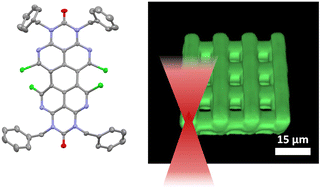
Mol. Syst. Des. Eng., 2023,8, 1470-1476
https://doi.org/10.1039/D3ME00102D
Factors influencing the catalytic activity of metal-dependent histidine-rich peptides: sequence, conformation, stereochemistry, self-assembly or their interplay?
Understanding how sequence modification, self-assembly, stereochemistry and affinity for zinc ions contribute to catalytic function of histidine-rich metal-dependent peptides.

Mol. Syst. Des. Eng., 2023,8, 1371-1380
https://doi.org/10.1039/D3ME00117B
Machine learning predictions of diffusion in bulk and confined ionic liquids using simple descriptors
Ionic liquids have many intriguing properties and widespread applications such as separations and energy storage.

Mol. Syst. Des. Eng., 2023,8, 1257-1274
https://doi.org/10.1039/D3ME00033H
Precursor design for efficient synthesis of large-pore, sulfur-doped ordered mesoporous carbon through direct pyrolysis
This work demonstrates a rational precursor design concept for simple and scalable synthesis of ordered mesoporous carbon materials.

Mol. Syst. Des. Eng., 2023,8, 1156-1164
https://doi.org/10.1039/D3ME00043E
Time-resolved operando analysis of the pyrolysis of a PECVD-deposited siloxane polymer using a combined DRIFTS–MS system
Experimental and computational study of the mechanism of conversion, via pyrolysis, of pV4D4 films into silica ceramics and of the impact of preparation conditions on their final structure.

Mol. Syst. Des. Eng., 2023,8, 1130-1145
https://doi.org/10.1039/D3ME00032J
Data-driven models for predicting intrinsically disordered protein polymer physics directly from composition or sequence
A new representation for intrinsically disordered protein sequences is developed for usage in both classical and deep learning machine learning models.

Mol. Syst. Des. Eng., 2023,8, 1146-1155
https://doi.org/10.1039/D3ME00053B
Alignment and photooxidation dynamics of a perylene diimide chromophore in lipid bilayers
Enabling the photochemical redox process of organic chromophores in water.

Mol. Syst. Des. Eng., 2023,8, 842-852
https://doi.org/10.1039/D2ME00243D
Functionalisation of conjugated macrocycles with type I and II concealed antiaromaticity via cross-coupling reactions
Halogenated paracyclophanetetraenes (PCTs) for the integration of the PCT motif into larger conjugated molecules by cross-coupling reactions are introduced.

Mol. Syst. Des. Eng., 2023,8, 713-720
https://doi.org/10.1039/D3ME00045A
Mixing ligands to enhance gas uptake in polyMOFs
PolyMOFs prepared from mixtures of multivalent polymer linkers and free linkers display tunable surface areas and improved CO2 uptake compared to native MOF-5 and polyMOF-5.
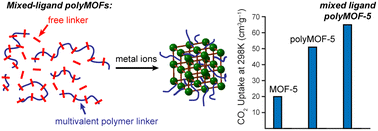
Mol. Syst. Des. Eng., 2023,8, 591-597
https://doi.org/10.1039/D2ME00227B
Effects of MOF linker rotation and functionalization on methane uptake and diffusion
Neglecting linker rotation in molecular simulations of methane in UiO-66 can have a significant impact on methane diffusion and moderate impact on methane uptake.
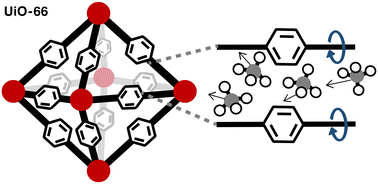
Mol. Syst. Des. Eng., 2023,8, 527-537
https://doi.org/10.1039/D2ME00237J
Charge transport and antiferromagnetic ordering in nitroxide radical crystals
Radical-based molecules are employed as functional materials in organic electronic devices.

Mol. Syst. Des. Eng., 2023,8, 464-472
https://doi.org/10.1039/D2ME00202G
Leveraging genetic algorithms to maximise the predictive capabilities of the SOAP descriptor
The smooth overlap of atomic positions (SOAP) descriptor represents an increasingly common approach to encode local atomic environments in a form readily digestible to machine learning algorithms.
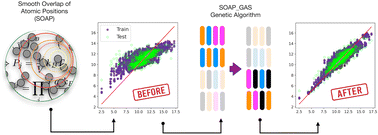
Mol. Syst. Des. Eng., 2023,8, 300-315
https://doi.org/10.1039/D2ME00149G
Current rectification by nanoparticles in bipolar nanopores
Charged nanoparticles can significantly increase rectification in bipolar nanopores but this effect is largely dependent on the pore's geometry, its charge distribution, and the sign of the nanoparticles' charge.

Mol. Syst. Des. Eng., 2023,8, 289-299
https://doi.org/10.1039/D2ME00187J
Molecular engineering of fluoroether electrolytes for lithium metal batteries
A critical balance between high solvent self-diffusivity in short-chain solvents and low solvation free energy in long-chain solvents leads to an optimal solvent size for achieving high ionic conductivity for fluoroether solvents.

Mol. Syst. Des. Eng., 2023,8, 195-206
https://doi.org/10.1039/D2ME00135G
Side chain effect on the electrochemical and optical properties of thieno[3,4-c]pyrrole-4,6-dione based donor–acceptor donor type monomers and polymers
In organic π-conjugated materials, side chains play important roles that impact far beyond solubility.
![Graphical abstract: Side chain effect on the electrochemical and optical properties of thieno[3,4-c]pyrrole-4,6-dione based donor–acceptor donor type monomers and polymers](/en/Image/Get?imageInfo.ImageType=GA&imageInfo.ImageIdentifier.ManuscriptID=D2ME00148A&imageInfo.ImageIdentifier.Year=2023)
Mol. Syst. Des. Eng., 2023,8, 65-78
https://doi.org/10.1039/D2ME00148A
Computational design of self-assembling peptide chassis materials for synthetic cells
High-throughput screening based on molecular simulation, machine learning and black-box optimization identifies promising candidates for forming self-assembled peptide vesicles.
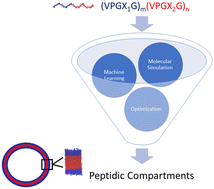
Mol. Syst. Des. Eng., 2023,8, 39-52
https://doi.org/10.1039/D2ME00169A
Single junction binary and ternary polymer solar cells-based D–A structured copolymer with low lying HOMO energy level and two nonfullerene acceptors
The power conversion efficiency of the ternary PSCs (16.32%) is higher than that for binary counterparts, i.e., 13.16% and 12.62% for P(DTB-BDD):DBTBT-IC and P(DTB-BDD):Y6, respectively.

Mol. Syst. Des. Eng., 2023,8, 53-64
https://doi.org/10.1039/D2ME00166G
The ridge integration method and its application to molecular sieving, demonstrated for gas purification via graphdiyne membranes
A method for the effective calculation of transmission probabilities for processes of molecular sieving is presented and tested against Eyring theory by comparison to Molecular Dynamics simulations.
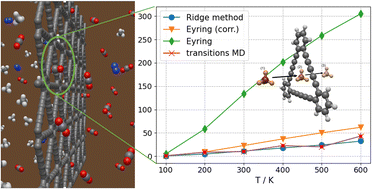
Mol. Syst. Des. Eng., 2022,7, 1622-1638
https://doi.org/10.1039/D2ME00120A
In silico active learning for small molecule properties
Machine learning (ML) has emerged as a promising technology to accelerate materials discovery.

Mol. Syst. Des. Eng., 2022,7, 1611-1621
https://doi.org/10.1039/D2ME00137C
Understanding and design of non-conservative optical matter systems using Markov state models
Non-conservative and permutationally-invariant Markov state models inform understanding and control of self-assembling optical matter systems.
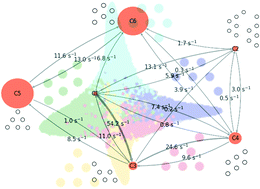
Mol. Syst. Des. Eng., 2022,7, 1228-1238
https://doi.org/10.1039/D2ME00087C
Through-space hopping transport in an iodine-doped perylene-based metal–organic framework
We report the electrical conductivity enhancement of a perylene-based MOF upon partial ligand oxidation. The conductivity enhancement is rationalised by quantum-chemical calculations, supporting a through-space hopping transport.
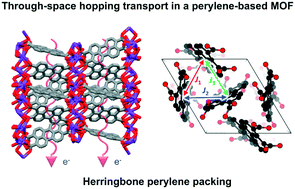
Mol. Syst. Des. Eng., 2022,7, 1065-1072
https://doi.org/10.1039/D2ME00108J
Application of transfer learning to predict diffusion properties in metal–organic frameworks
The knowledge leveraged from adsorption property can be used to induce enhancements in the prediction of diffusion property within metal–organic frameworks.
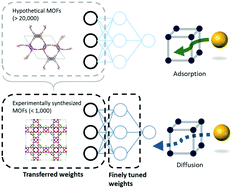
Mol. Syst. Des. Eng., 2022,7, 1056-1064
https://doi.org/10.1039/D2ME00082B
Substituent effects on the mechanochemical response of zinc dialkyldithiophosphate
We show how the tribofilm growth rate of zinc dialkyldithiophosphate (ZDDP) changes for different alkyl substitutents under carefully controlled temperature and stress conditions.
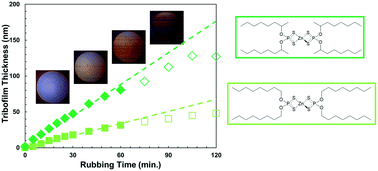
Mol. Syst. Des. Eng., 2022,7, 1045-1055
https://doi.org/10.1039/D2ME00049K
Surface segregation in the AgAuCuPdPt high entropy alloy: insights from molecular simulations
Segregation reduces the chemical diversity but increases the number of catalytically active sites of the dominant element at the surface.
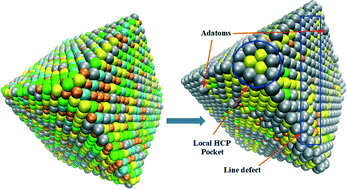
Mol. Syst. Des. Eng., 2022,7, 878-888
https://doi.org/10.1039/D2ME00045H
Fabrication and mechanical properties of knitted dissimilar polymeric materials with movable cross-links
Movable cross-network elastomer with knitting polymers (KP elastomer) were obtained by bulk polymerization of main chain monomers in presence of host polymer. The two design strategies successfully improve the toughness and stiffness of the KP elastomers.

Mol. Syst. Des. Eng., 2022,7, 733-745
https://doi.org/10.1039/D2ME00016D
Twisted tetrathiafulvalene crystals
Crystal twisting introduces optical activity to organic semiconducting films of centrosymmetric tetrathiafulvalene.
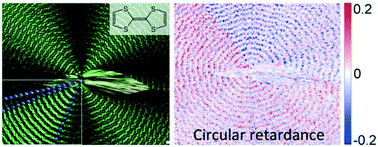
Mol. Syst. Des. Eng., 2022,7, 569-576
https://doi.org/10.1039/D2ME00010E
Computational discovery of high charge mobility self-assembling π-conjugated peptides
Molecular dynamics simulation, electronic structure calculations, and charge mobility theory identify high charge mobility self-assembling π-conjugated peptides.

Mol. Syst. Des. Eng., 2022,7, 447-459
https://doi.org/10.1039/D2ME00017B
Identification of novel candidates for inhibition of LasR, a quorum-sensing receptor of multidrug resistant Pseudomonas aeruginosa, through a specialized multi-level in silico approach
The emergence of multi-drug resistant bacteria in the past decades has become one of the major public health issues of our time.
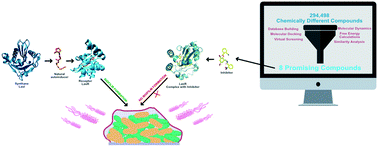
Mol. Syst. Des. Eng., 2022,7, 434-446
https://doi.org/10.1039/D2ME00009A
Microtubule-inspired functionalization of carbon nanotubes: a biomimetic carrier design
A strategy is proposed for the non-covalent functionalization of carbon nanotubes based on biomimicry of the cytoskeletal protein, microtubule.
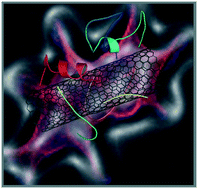
Mol. Syst. Des. Eng., 2022,7, 330-349
https://doi.org/10.1039/D1ME00190F
Active learning of polarizable nanoparticle phase diagrams for the guided design of triggerable self-assembling superlattices
Coarse-grained molecular modeling and active learning enable the design of polarizable nanoparticles capable of triggered assembly and disassembly.
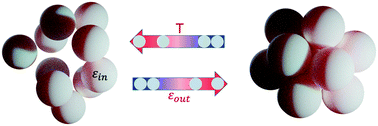
Mol. Syst. Des. Eng., 2022,7, 350-363
https://doi.org/10.1039/D1ME00187F
About this collection
Welcome to our online rolling collection of the hottest work published in MSDE. Here we feature recent MSDE articles highlighted as HOT by the handling editor or our referees.
Congratulations to all the authors whose articles are featured.